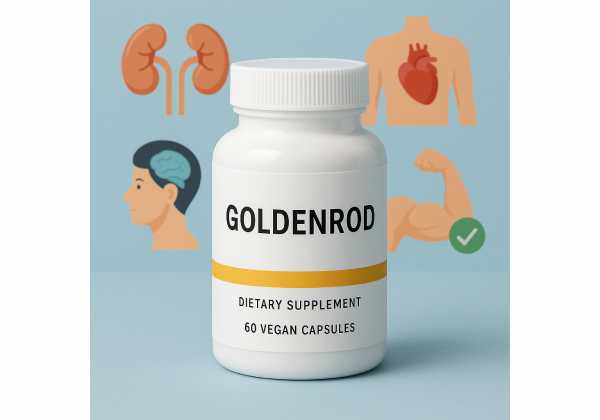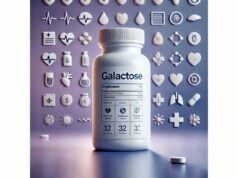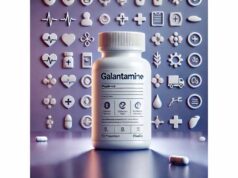
Goldenrod (Solidago spp.), especially European goldenrod (Solidago virgaurea), is a traditional herbal remedy most often used to support urinary tract comfort. Herbalists value it for mild diuretic action (helping you pass more urine), soothing properties for bladder irritation, and supportive use during kidney stone prevention plans. Some people also use goldenrod topically for minor aches or skin care, and it occasionally appears in multi-herb formulas for joint stiffness. Despite its bright blooms, goldenrod is not the main culprit behind seasonal hay fever—that is usually ragweed, which blooms at the same time. If you are considering goldenrod, you will find it as tea, tincture, and standardized extracts. This guide explains what it can and cannot do, how to use it safely, who should avoid it, and what the research actually shows so you can make informed, practical decisions.
Key Insights
- Supports urinary comfort as a gentle diuretic and bladder soother.
- May help reduce irritation during cystitis recovery plans; evidence for direct antibacterial effects remains preliminary.
- Typical tea dosage: 3–5 g dried herb per cup, up to 3 times daily (about 6–12 g/day total).
- Avoid if you have edema from heart or kidney failure, severe kidney disease, or a known Asteraceae allergy.
- In vitro work suggests combining goldenrod with certain antibiotics may alter effects; use medical guidance during treatment.
Table of Contents
- What exactly is goldenrod?
- Does goldenrod really work for urinary issues?
- How to use goldenrod: forms and dosage
- Variables that change results
- Mistakes to avoid with goldenrod
- Safety, side effects, and who should avoid it
- What the evidence says: a concise summary
What exactly is goldenrod?
Goldenrod is a group of flowering plants in the Asteraceae family. The most studied species for medicinal use in Europe is European goldenrod (Solidago virgaurea). North American species such as S. canadensis and S. gigantea appear in supplements too, but regulatory monographs and most pharmacognosy texts use S. virgaurea as the reference plant. Herbal preparations are typically made from the aerial parts (the above-ground herb harvested during flowering), either as cut-and-sifted tea herb, fluid extracts, or dry extracts standardized by extract ratios (for example, DER 4–7:1).
Why people use it: goldenrod has a long history in urological phytotherapy. Traditionally, it’s taken to gently increase urine volume (aquaeresis), flush the urinary tract, and ease discomfort from minor bladder irritation or after uncomplicated UTIs have been treated. It also appears in kidney stone prevention programs, paired with high fluid intake and dietary measures. In some multi-herb formulas for musculoskeletal aches, goldenrod contributes anti-inflammatory and spasm-reducing activity, though the evidence base there usually comes from combination products, not goldenrod alone.
A note on allergies and the “blame” myth: goldenrod’s showy yellow flowers bloom when ragweed releases wind-borne pollen. Goldenrod pollen is heavier and mainly carried by insects, so it’s far less likely to trigger seasonal hay fever simply from being nearby. That said, people who are allergic to Asteraceae plants can still react if they handle or ingest goldenrod. If you’ve had reactions to daisies, chamomile, ragweed, or chrysanthemums, treat goldenrod with caution.
Botany in brief:
- Part used: herb (aerial parts).
- Key constituents: flavonoids (quercetin glycosides, rutin), phenolic acids (caffeic, chlorogenic), saponins, essential oil (low content), and tannins.
- Traditional actions: mild diuretic, anti-inflammatory, spasmolytic (reduces cramping), astringent.
Bottom line: goldenrod is not a cure-all; it is a supportive herb best placed within a broader plan—adequate hydration, timely medical evaluation for urinary symptoms, and, when indicated, appropriate antimicrobial therapy.
Does goldenrod really work for urinary issues?
Goldenrod’s most consistent traditional indication is “irrigation therapy” of the urinary tract—essentially, increasing urine output to help flush irritants from the bladder and urethra. People often reach for it when they feel post-infection sensitivity, mild urgency, or occasional discomfort. Mechanistically, flavonoids and saponins appear to contribute to diuretic and anti-inflammatory effects. In laboratory models, extracts can dampen inflammatory mediators and relax smooth muscle, which may explain why some individuals feel less cramping or burning during recovery.
What about infections? In vitro (test-tube) studies show that European goldenrod extracts can inhibit formation of bacterial biofilms and slow the growth of select organisms relevant to urinary health. That’s promising for research, but in vitro activity doesn’t automatically translate into clinical benefit. Currently, high-quality randomized trials using goldenrod alone for acute UTIs are lacking. For uncomplicated UTIs, standard medical care remains essential. Where goldenrod fits best is as an adjunct—to support comfort and urine flow—once appropriate treatment is underway or during the tail end of recovery to help calm residual irritation.
Kidney stones are another area of interest. Traditional use places goldenrod alongside hydration and diet to reduce stone recurrence risk. Its mild diuretic and antispasmodic profile may help with flushing and cramp relief. Again, the evidence is based more on ethnobotanical use and pharmacology than on modern RCTs specifically proving reduced stone recurrence. If you have a history of stones, speak with a clinician about individualized prevention strategies (citrate intake, sodium restriction, fluid goals), and consider goldenrod as one small piece of a larger plan.
Why do some people report less urgency or burning? A practical explanation is that increasing fluid intake (required with goldenrod) dilutes urinary irritants and increases voiding frequency, while the herb’s phenolic compounds add a mild anti-inflammatory effect. Both can make symptoms feel more manageable during convalescence. Still, if symptoms persist beyond 24–48 hours, worsen, or include fever, back pain, or blood in the urine, seek medical care immediately.
Take-home: goldenrod can help make you more comfortable and support urine flow. It should not replace diagnosis or first-line therapy for infections, but it can complement those steps when used thoughtfully and safely.
How to use goldenrod: forms and dosage
Goldenrod comes in several forms. Choose a format you’ll use consistently, and always pair it with adequate fluids unless a clinician has told you to restrict fluids.
Tea (infusion)
- Use 3–5 g of the dried aerial herb per cup (about 1–2 teaspoons by weight).
- Steep 10–15 minutes, covered.
- Typical schedule: 1 cup up to 3 times daily.
- Total daily amount from tea commonly falls near 6–12 g of dried herb.
Tincture (hydroalcoholic extract)
- Common strengths: 1:5 (herb\:solvent).
- Typical adult range: 2–4 mL, up to 3 times daily.
- Add to a small glass of water; sip slowly.
Dry extract (capsules/tablets)
- Products vary widely in extract ratio (e.g., DER 4–7:1).
- Follow the label’s “dried herb equivalent” guidance to land near 6–12 g/day of herb equivalent, divided 2–3 doses.
- Because manufacturers use different solvents and standardizations, match the daily herb-equivalent range rather than fixating on mg per capsule.
Topical use
- Goldenrod appears in some creams or washes aimed at soothing muscles or skin. Use according to directions; avoid broken skin unless the product is specifically intended for that use.
Timing and duration
- For urinary support, many people use goldenrod for several days to a few weeks during or after recovery.
- For recurrent issues, intermittent courses under clinician guidance may be reasonable.
- Long-term continuous use is uncommon; schedule breaks and reassess.
Hydration matters
- Irrigation-type use only works with adequate fluid intake. Unless restricted by your clinician, aim for pale-yellow urine while using goldenrod.
- If you’re on fluid restriction, diuretics, or have heart/kidney conditions, do not self-start goldenrod; get medical advice first.
Combining with other botanicals
- Goldenrod is often paired with demulcent herbs (e.g., corn silk) for soothing, or with urinary antiseptic herbs in traditional formulas. Synergy is plausible, but evidence in humans is limited.
- If you’re on antibiotics, do not change your regimen. Use goldenrod only as an adjunct if your clinician agrees.
Who is this dosing for?
- The ranges above are typical adult amounts.
- Children, pregnant or lactating individuals, and older adults with multiple conditions need personalized guidance—avoid self-dosing.
Variables that change results
Species and plant part
- European goldenrod (S. virgaurea) is the reference species in European monographs. Some supplements use S. canadensis or S. gigantea. While related, species differ in their profiles of flavonoids and essential oils, which can affect potency and tolerability. Choose products that disclose the species and plant part (herb) clearly.
Extraction and standardization
- Tea vs. tincture vs. dry extract will pull different proportions of constituents. For example, hot water pulls more polar compounds (phenolic acids, many flavonoids), while hydroalcoholic tinctures extract a broader range.
- Standardized dry extracts (with a declared DER) provide more consistent dosing, but “mg per capsule” means little without the extract ratio and herb-equivalent amount.
Quality and freshness
- Goldenrod’s delicate aromatics fade with time. Fresh, well-dried herb should have a pleasant, slightly resinous aroma. Old material may be less effective and more irritating. Buy from reputable suppliers that test for identity and contaminants (heavy metals, microbes, adulterants).
Hydration and diet
- The diuretic benefit depends on fluid intake. Undershooting your fluids can make symptoms feel worse, not better.
- Caffeine and high-sodium meals can counteract your efforts by increasing bladder irritability or fluid retention, respectively.
- For stone formers, the rest of your prevention plan (citrate, calcium with oxalate-rich foods, sodium moderation) influences outcomes more than any single herb.
Individual health status
- People with sensitive stomachs may prefer tea sipped slowly rather than capsules.
- Those on multiple medications—or with heart, liver, or kidney disease—need professional guidance to avoid interactions or fluid mismanagement.
Formula context
- Some of the historical “joint support” research involves combination formulas that include goldenrod alongside other plants. Benefits seen in those trials reflect the combination, not goldenrod alone. If you’re choosing a multi-herb product, evaluate the whole formula and its evidence.
Expectations and timelines
- For simple urinary irritation, some people feel milder urgency or burning within a day or two of consistent use plus hydration.
- Lack of improvement, recurrence, fever, flank pain, or blood in urine means you need a clinician—do not wait for an herb to “kick in.”
Practical tip
- Keep a brief symptom and intake log (cups of tea or mL tincture, water intake, bathroom frequency). It helps you and your clinician judge whether goldenrod is helping and whether dosing or timing needs adjustment.
Mistakes to avoid with goldenrod
Skipping evaluation for red-flag symptoms
Urinary symptoms can flag serious conditions—UTIs that need antibiotics, kidney stones, or less common issues. Do not rely on goldenrod instead of seeing a clinician if you have fever, chills, flank or back pain, persistent pain, blood in urine, or symptoms that last more than 24–48 hours.
Using it without adequate fluids
Irrigation therapy only works if you actually increase fluid intake. Taking capsules or tea “dry” undercuts what goldenrod is meant to do and can make irritation feel worse.
Ignoring medical conditions that contraindicate use
People with edema from heart or kidney failure should not use diuretic herbs like goldenrod. Those with severe kidney disease, uncontrolled hypertension, or on fluid restrictions also need to avoid or get explicit medical approval.
Overlooking potential interactions
Goldenrod’s diuretic action can add to the effects of prescription diuretics, raising the risk of dehydration or electrolyte imbalance. If you take diuretics, lithium, or blood pressure medications, consult your clinician. Avoid combining with other diuretic herbs unless you’re being monitored.
Assuming “more is better”
Staying within typical adult ranges (about 6–12 g/day herb equivalent) is prudent. Higher amounts aren’t proven more effective and can increase side-effect risk (GI upset, headache, dizziness).
Combining with antibiotics without guidance
In vitro work suggests certain goldenrod extracts may alter antibiotic activity. That doesn’t prove a clinically harmful interaction, but it’s a good reason to inform your clinician and pharmacist. Don’t delay or replace antibiotics with herbs.
Using the wrong species or unlabeled products
Supplements should list the exact species (e.g., Solidago virgaurea), the plant part (herb), extraction ratio, and solvent if applicable. Avoid mystery products or those making disease-treatment claims.
Skipping a “patch check” for sensitivity
If you have a history of plant allergies (especially Asteraceae), test a small amount first or avoid entirely. For topical products, patch-test on a small skin area.
Safety, side effects, and who should avoid it
Common side effects (usually mild and transient)
- Stomach upset, nausea, or loose stool—often improved by taking with food or switching to tea.
- Headache or lightheadedness if you over-diurese or under-hydrate.
- Skin irritation with topical products in sensitive users.
Allergy and cross-reactivity
- Goldenrod belongs to the Asteraceae family (daisy family). People allergic to ragweed, chamomile, or chrysanthemums may react to goldenrod. If you’ve had previous Asteraceae reactions, avoid or use only under supervision. Discontinue immediately if you experience itching, hives, swelling, or breathing difficulty.
Who should not use goldenrod (without explicit medical guidance)
- Individuals with edema due to heart or kidney failure.
- People with severe kidney disease or acute kidney infection.
- Those on fluid restriction.
- Pregnant or breastfeeding individuals (insufficient safety data).
- Children (safety and dosing not well established).
- Anyone with a known allergy to Asteraceae plants.
Medication and lab considerations
- Diuretics: additive effects can increase dehydration or electrolyte shifts.
- Lithium: changes in fluid balance can alter lithium levels—medical supervision is essential.
- Blood pressure medications: monitor for lightheadedness if urine output increases.
- If you’re undergoing UTI testing, remember that heavy fluid intake (with or without goldenrod) may dilute urine samples; follow lab instructions.
When to stop and seek help
- Fever, chills, flank/back pain, blood in urine, severe or worsening pain, or no improvement within 48 hours of supportive care.
- Signs of allergic reaction or severe GI symptoms.
- Dizziness, confusion, or signs of dehydration (very dark urine, dry mouth, low urine output).
Bottom line: goldenrod is generally well tolerated in healthy adults when used short-term at modest doses with adequate hydration. The safest path is to loop in your clinician, especially if you take medications or have chronic conditions.
What the evidence says: a concise summary
Regulatory perspective
European herbal authorities recognize traditional use of European goldenrod for increasing urine output and as an adjuvant in minor urinary complaints. This recognition is based on long-standing use, pharmacological plausibility, and safety data—not on large modern randomized trials showing disease-modifying effects. Preparations are typically the flowering herb used as tea or standardized extracts, with dosing aimed at delivering about 6–12 g/day of herb equivalent for short courses.
Pharmacology and lab studies
Phytochemical reviews describe a consistent profile of flavonoids, phenolic acids, saponins, and small amounts of essential oil. In vitro and animal data show mild diuretic, anti-inflammatory, spasmolytic, and antioxidant effects. Recent laboratory studies report anti-biofilm and antibacterial activity against select uropathogens and opportunists (for example, effects on extended-spectrum β-lactamase-producing strains and early biofilm formation). These mechanistic findings support the traditional “irrigation plus soothing” rationale but are not proof of clinical efficacy on their own.
Clinical research
- Urinary indications: modern, high-quality clinical trials of goldenrod alone for acute UTIs are limited. Observational and combination-product studies exist, but confounding is high.
- Musculoskeletal indications: older randomized trials investigated a combination product that included goldenrod with aspen and ash extracts for rheumatic pain. Benefits seen there cannot be attributed to goldenrod alone.
- Antibiotic interactions: at least one in vitro study suggests that combining goldenrod extracts with certain antibiotics may change antibacterial effects (sometimes weakening activity). Clinical relevance remains uncertain, but it warrants caution and disclosure to your clinician.
Safety data
Across reviews and monographs, goldenrod demonstrates a favorable safety profile in healthy adults when used for short periods with appropriate fluid intake. The main cautions are allergy risk within Asteraceae, potential additive diuretic effects, and avoiding use in edema due to heart or kidney failure or in people with severe renal disease. Pregnancy and lactation lack robust safety data.
Practical interpretation
Goldenrod remains a reasonable supportive option for urinary comfort, best used as part of a comprehensive plan: diagnosis, timely antimicrobial therapy when indicated, hydration, pain relief strategies, and prevention steps for stone formers. Expect symptom support—not a stand-alone cure.
References
- COMMUNITY HERBAL MONOGRAPH ON SOLIDAGO VIRGAUREA L., HERBA 2008 (Guideline)
- Solidago virgaurea L.: A Review of Its Ethnomedicinal Uses, Phytochemistry, and Pharmacological Activities 2020 (Systematic Review)
- Is it Worth Combining Solidago virgaurea Extract and Antibiotics against Uropathogenic Escherichia coli Rods? An In Vitro Model Study 2021
- Impact of Solidago virgaurea Extract on Biofilm Formation for ESBL-Producing Pseudomonas aeruginosa 2023
- Phytodolor–effects and efficacy of a herbal medicine 2007 (RCTs on combination product)
Disclaimer
This content is for educational purposes only and is not a substitute for professional medical advice, diagnosis, or treatment. Always seek the guidance of your physician or another qualified health provider with any questions about a medical condition, symptoms, or before starting any new supplement. Never disregard professional medical advice or delay seeking it because of something you have read here.
If you found this helpful, consider sharing it with a friend or on Facebook, X (formerly Twitter), or any platform you prefer, and follow us for more evidence-informed health guides. Your support helps us continue creating high-quality resources.










